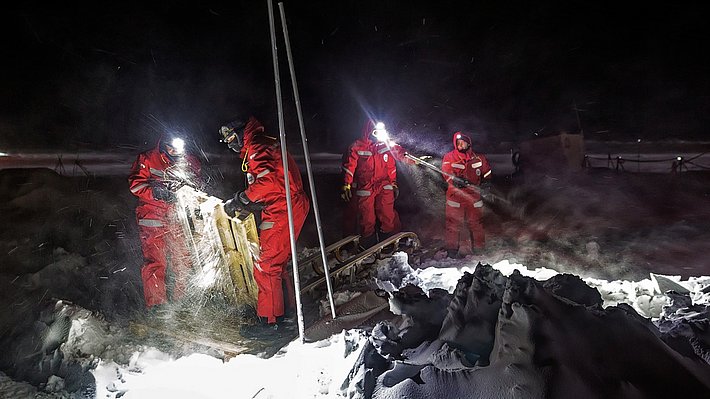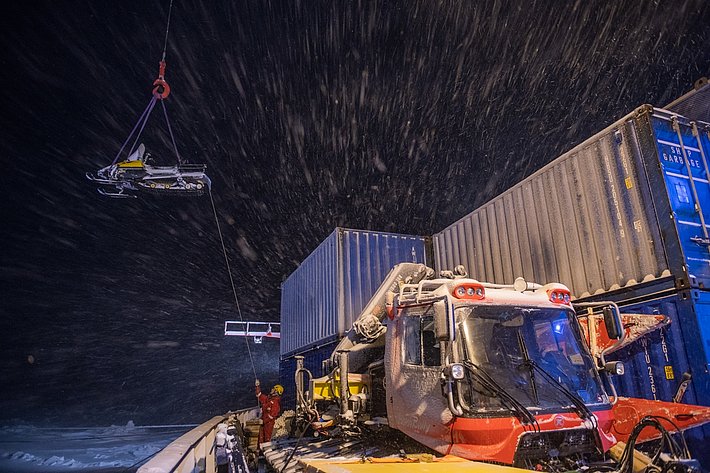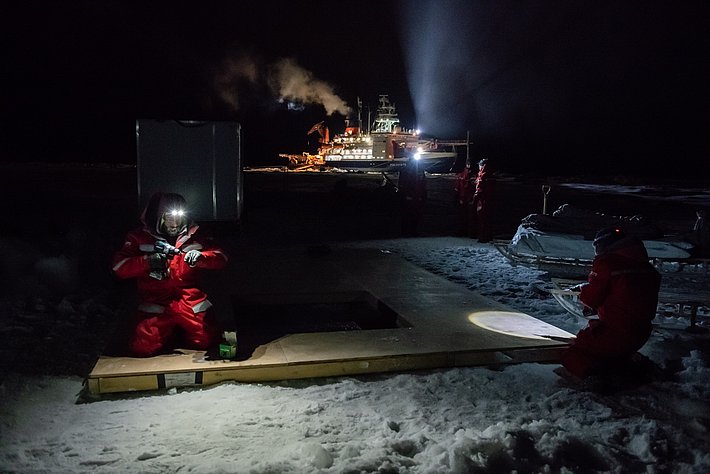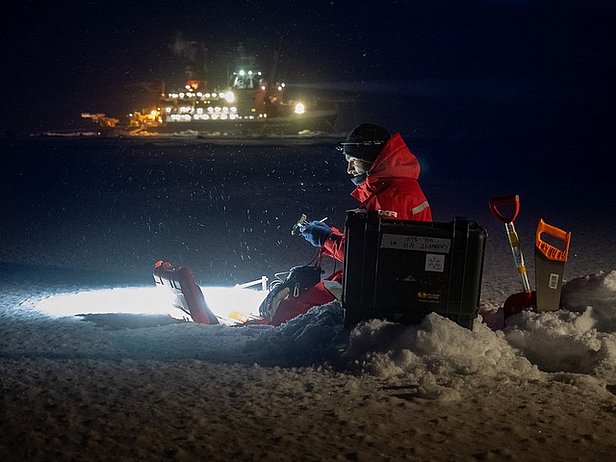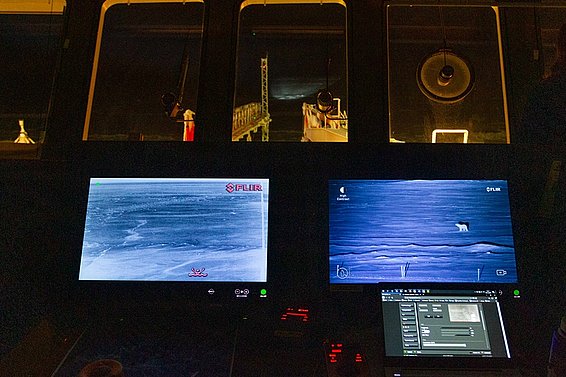13.12.2019 | Logbook
Author ¶
David Wagner
With the research vessel Polarstern moored to a suitable ice floe, SLF researcher David Wagner and his colleagues start to explore their surroundings and install measuring instruments. Things rarely go entirely to plan, with visiting polar bears and abrupt ice shifts complicating the work.
After arriving at 'our' flow, we began by making a thorough exploration of the area to find suitable locations for our main equipment. Little 'cities' were soon springing up all over the ice: MET City, Ocean City, as well as installations for the underwater robot ROV and remote sensing devices. The cities are actually research camps on the ice, in which the equipment and measuring instruments needed to explore the atmosphere, sea ice and underwater world are installed.
As members of the Sea Ice Team, it was also important for us to find places where we could dig regular snow profiles in the months ahead. We were soon busy installing power lines and data cables and setting up larger power distributors at the main locations. We also performed the first scans of the snow surface using a laser. By scanning the same area every week, for example, and comparing the scans, you can work out how the snow accumulates and erodes over time, under the influence of wind in particular.
Evacuation due to polar bears ¶
Our plans and schedules have been repeatedly disrupted. First of all, two old friends called
round to say hello: a polar bear mother and her cub. Since then, polar bear visits have become a regular occurrence. Everyone in the camp has to down tools at such times, of course. Once there was even an evacuation: the ship's horn sounded and everyone had to scramble back on board as fast as possible, which they managed to do, despite a lot of people being out on the ice. The usual way of warding off polar bears is by firing signal pistols into the air or, as a last resort, by flying close to them in the helicopter. This is important so that the bears don't become too comfortable around us – for while they might look cuddly, they pose a very real threat.
As well as the polar bears, there have been frequent powerful ice movements to contend with, resulting in a number of power cables being severed. One night, the installations for the ROV underwater robot were swept away. By the next morning, they were suddenly several hundred metres from their original location, meaning that ROV City had to be designed and installed all over again.
Fragile snowpack ¶
But gradually things began to settle down somewhat and most of the equipment got built. About two weeks after docking at the floe, we were finally able to start the snow measurements. For the first snow profile, we chose a spot where the ice was two years old. And while it didn't exactly come as a surprise to me, I began to acquire first-hand experience of the type of snow we have to deal with here. It is extremely fragile as it consists largely of loosely-bonded depth hoar, which makes it hard to take samples if, like us, you want to preserve the microstructure.
To start with, we took whole blocks of snow onto the vessel and in the cold laboratory prepared the measurement in the micro-CT scanner and sealed the snow samples with phthalate to conserve their structure. Later on, we decided to seal the snow directly in the field owing to the limited capacity of our transport sledges.
A rift in the floe ¶
Then came the first proper storm, which lasted for two days and triggered further ice movements – which indeed were so strong this time that a huge diagonal rift opened up temporarily
in the floe. Unfortunately, three of our main installations were situated on the other side of the crack. The movements mean that everything is now about 500 metres away from where it was. Ocean City had to be vacated and relocated, and Met City was without power for some time. And now yet another area of low pressure is passing our way, causing the ice to drift at a speed of almost one kilometre an hour. We hope it won't mean too much additional upheaval in the camp. But while snow measurements are tricky because we're always having to find new locations, we're still managing to collect data on snow here, in spite of all the challenges.
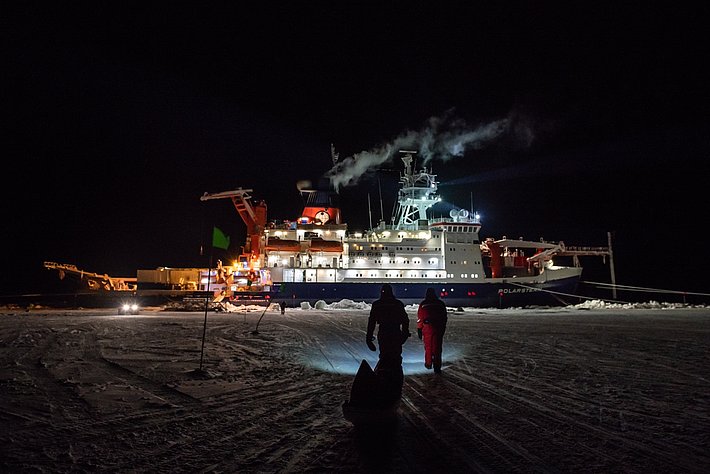
Alfred-Wegener-Institut / Esther Horvath (CC-BY 4.0)
